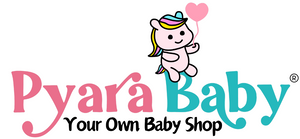Essential Sleep Safety: The Ultimate Guide to Choosing and Using Baby Blankets Safely
As a parent, ensuring your baby sleeps safely and comfortably is a top priority. However, navigating the world of baby blankets and sleep safety can be overwhelming. How do you keep your little one cozy while also minimizing the risk of accidents or suffocation? In this guide, we'll explore essential tips for ensuring your baby sleeps soundly and safely with blankets.
Understanding Sleep Safety Guidelines:
Before diving into the specifics of baby blankets, it's crucial to familiarize yourself with sleep safety guidelines recommended by pediatric experts:
Back to Sleep: Always place your baby on their back to sleep, whether for naps or nighttime sleep. This position reduces the risk of sudden infant death syndrome (SIDS) and allows for optimal breathing.
Firm Sleep Surface: Use a firm mattress with a fitted sheet in your baby's crib or bassinet. Avoid soft bedding, pillows, or plush toys that could pose suffocation hazards.

Room Sharing: Consider room sharing with your baby, but not bed sharing. Having your baby sleep in a crib or bassinet near your bed allows for close monitoring and easy access for feeding and comforting.
Temperature Control: Maintain a comfortable room temperature (around 68-72°F or 20-22°C) and dress your baby in a sleep sack or onesie appropriate for the environment to prevent overheating.
Choosing Safe Baby Blankets:
Once you're familiar with sleep safety guidelines, selecting the right baby blanket becomes crucial. Here are some considerations:
Breathable Fabric: Opt for lightweight, breathable fabrics such as cotton or muslin. These materials promote air circulation, reducing the risk of overheating and ensuring your baby stays comfortable throughout the night.
Size and Weight: Choose blankets that are appropriately sized for your baby's crib or bassinet. Avoid oversized or heavy blankets that could cover your baby's face and obstruct breathing.
Avoid Loose Bedding: Steer clear of blankets with loose threads, ribbons, or decorative elements that could pose entanglement hazards. Stick to simple, seamless designs for maximum safety.
Swaddling: Swaddling can help soothe and comfort newborns, but it's essential to do it safely. Use a lightweight, breathable swaddle blanket and ensure it's wrapped snugly around your baby's torso while leaving room for hip movement.
Safe Sleep Practices with Blankets:
Now that you've selected a safe baby blanket, here's how to incorporate it into your baby's sleep routine responsibly:
Layering: Instead of using thick blankets, opt for layering lightweight blankets. This allows you to adjust the number of layers based on the room temperature, ensuring your baby stays comfortably warm without overheating.
Feet-to-Foot Positioning: When using blankets, always place your baby's feet at the foot of the crib to prevent them from wriggling under the covers. Tuck the blanket securely around the mattress, ensuring it reaches no higher than your baby's chest.
Monitor Your Baby: Regularly check on your baby while they sleep to ensure they're comfortable and their airways are clear. Avoid using blankets with excessive folds or wrinkles that could create pockets where your baby's face might become trapped.
Transition to Sleep Sacks: As your baby grows and becomes more active, consider transitioning from blankets to sleep sacks or wearable blankets. These alternatives provide warmth without the risk of loose bedding and allow for greater mobility.


